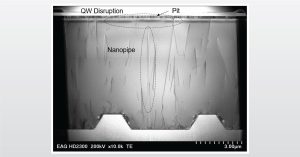
Characterization & Failure Analysis of Optoelectronics Webinar
In the full webinar we introduce Characterization and Failure Analysis of Optoelectronic Materials and Devices
To enable certain features and improve your experience with us, this site stores cookies on your computer. Please click Continue to provide your authorization and permanently remove this message.
To find out more, please see our privacy policy.